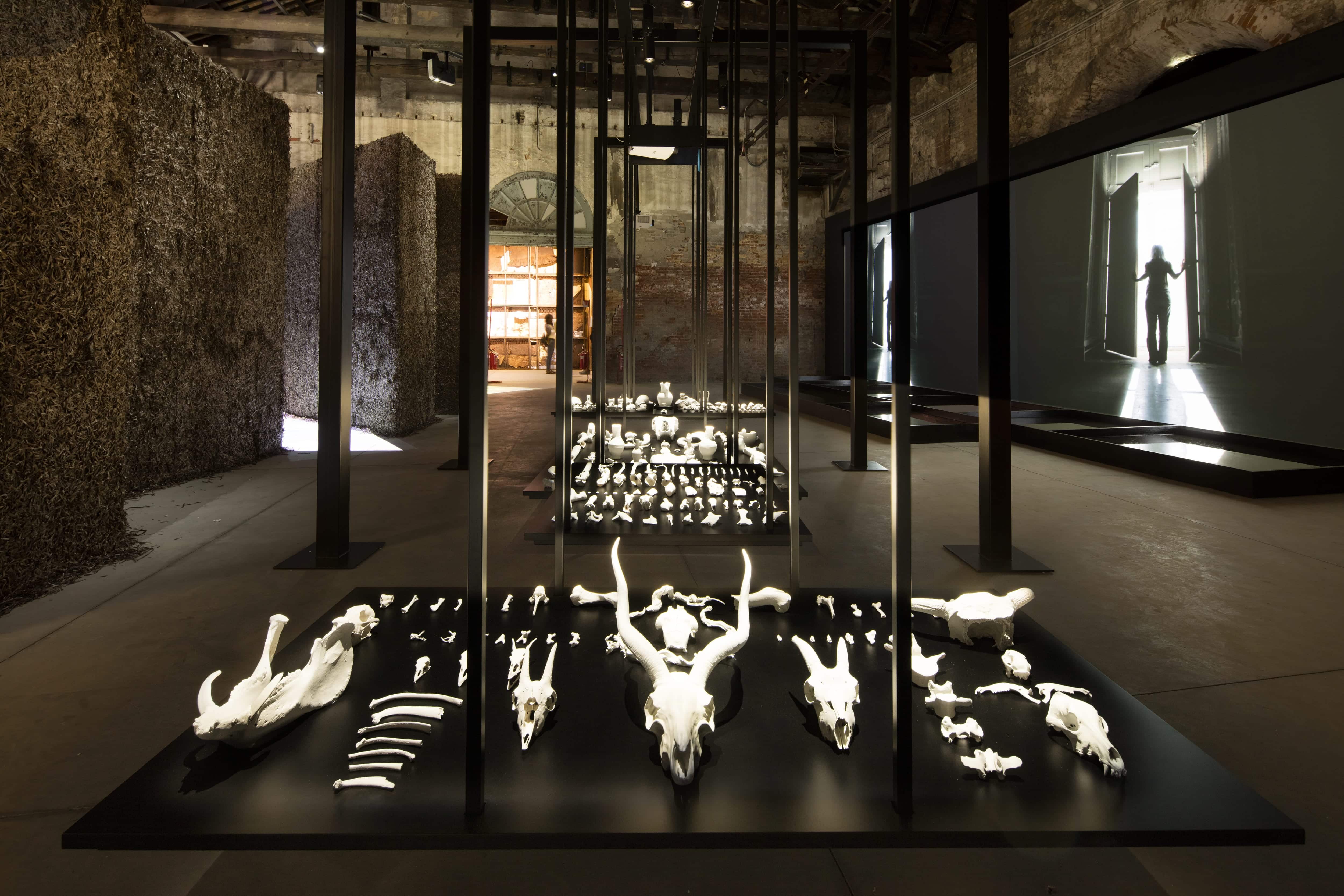
I remember putting my notes together, re-reading and editing the curatorial narrative I wrote; at the centre of it, Malta and the Sea. How could it be different after all? This was to be the Pavilion of the island that is situated in the middle of the Mediterranean Sea, and I myself, am also Mediterranean.
When I started writing Maleth, it was the wide blue sea that was in my mind and heart; this common tactile 'land' that unites all the lands that bathe in its waters. Now that the Pavilion is all set up in the Venice Arsenale space, these deep dark blue waters still prevail when you enter the exhibition space. The three featured artworks seem to emerge out of the darkness of the depths, reaching out through centuries of history and culture. Included by critics, in the top ten exhibits of this year's Biennale edition, the Maltese pavilion succeeds in touching all. The feeling the narrative succeeds to convey through the curated artworks, spreads within, as the water of the Sea filling through the grains of sand; if you visit it, you cannot remain unmoved.
‘Like prolonged echoes which merge far away in an opaque, deep oneness, as vast as darkness and as vast as light, the perfumes, sounds, and colours answer each to each.’, IV Correspandances, Baudelaire, 1846.
Reading Beudelaire’s verse I think of Maleth, this island of intense beauty and the Sea that surrounds it; the intimate feelings it provokes within one’s inner psychic. The three artists, Trevor Borg, Vince Briffa, and Klitsa Antoniou, have taken the text I have written and created artworks that stand in space as votive stones in some sacred site in the Mediterranean Sea. Where? It was never important. the Sea is one and often helps us See beyond man-made boundaries.. it takes us beyond horizons.

The Sea itself and Maleth become a kind of primaeval compass-extraordinaire one holds out to be guided through and beyond the aspirations of everyday reality; mythology, history and contemporary visions merge in one evocative gesture. An exhibit such as this possesses a unique quality that others lack; it stands out of reach. By definition heterotopias can only exist as such; escaping true perception but enduringly evoking imagination.
Pallasma in his work, Eyes of the Skin, writes that we behold, touch, listen and measure the world with our entire bodily existence, the experiential world becomes organised and articulated around the centre of the body. But this earthly body of ours can move and extend beyond the Sea, that hides semantic lands and sentiments unseen and still unfelt. To See Beyond the Sea; that is what Maleth feels for me.
Persisting in standing beyond space and out of time, never a part of others’ experiential world, others' reality; certainly atopic and in my own words, deeply personal and evocatively heterotopic.
Maleth-Heterotopias of Evocation is the Maltese Pavilion at the Venice Art Biennale of 2019.
Maleth is your Pavilion. Maleth is your story and ours.
Dr Hesperia Iliadou Suppiej de Subplajo (Curator)
Sources:
Juhani Pallasmaa, The eyes of the skin; Architecture and the Senses, (London: John Wiley & Sons, 1999)
Francis Scarfe, Baudelaire- The Complete Verse, (London: Anvil Press Poetry, 1986)
Submitting ...
Saving ...
Any applications related to this entity, will also be automatically deleted.